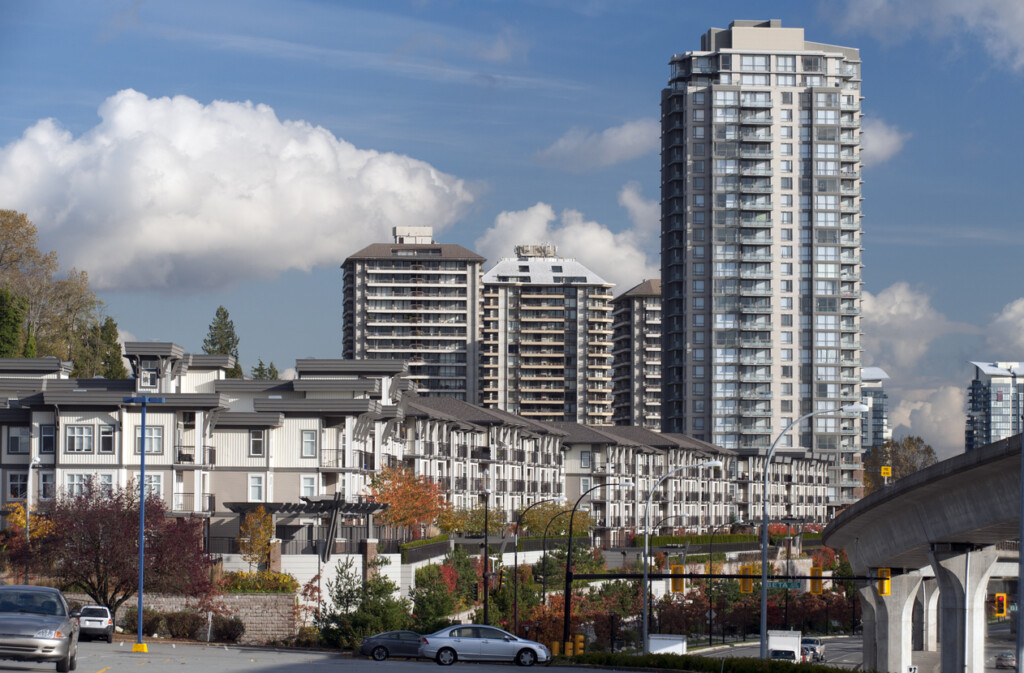
By Sarah Jones
In our previous articles “Proposed Changes to Eliminate Zoning Barriers and Increase Small-Scale, Multi-Unit Housing” and “Proposed Legislation to Provide Builders with Transparency and Cost Certainty Upfront”, we detailed the changes proposed by Bill 44: Housing Statutes (Residential Development) Amendment Act, 2023 and Bill 46: Housing Statutes (Development Finance) Amendment Act, 2023.
Last month, the Province released Frequently Asked Questions documents for Bills 44 and 46, as well as Bill 47: Housing Statutes (Transit-Oriented Areas) Amendment Act, 2023. This article summarizes the government’s guidance around questions it has encountered since the legislation received royal assent late last year.
Bill 44: Pro-Active Planning and Small-Scale, Multi-Unit Housing
- Rezonings that already received first reading on the date that Bill 44 came into force (November 30, 2023) are not subject to the new public hearing requirements.
- For zoning bylaws for which public hearings are prohibited, local governments must still publish notice that a zoning bylaw is moving through the approvals process prior to first reading.
- Even where public hearings are prohibited, Council can still direct staff to hold a “public meeting” or consult through other channels like open houses or online engagement.
- The Province is exploring additional tools for local governments to secure key outcomes like affordability and complete communities that currently cannot be secured outside of rezonings.
- While urban containment boundaries may change over time, the legislation prohibits local governments from unreasonably restricting or prohibiting small-scale, multi-unit housing.
- Public hearing requirements for amending an official community plan remain unchanged.
Bill 46: Development Finance
- Local governments may be able to continue negotiating community amenity contributions on rezoning applications, and the legislation does not impact affordable housing and additional amenities that have already been secured.
- As with existing development finance tools, it is up to each local government to decide whether to update or adopt new development cost charge (“DCC”) bylaws or use the new amenity cost charge (“ACC”) tool based on the approach they choose to take to help fund infrastructure and amenities required for growth.
- The types of costs and projects eligible under ACCs include community centers, recreational facilities, libraries, public squares, and community museums. ACCs can only fund capital costs, like planning, engineering, construction, and interests costs.
- New ACC bylaws do not apply to in-stream projects for which the application has already been received by the date the bylaw is adopted. Moreover, an amended (or updated) ACC charge does not apply to an in-stream project if a building permit for the development is received within 12 months after the date the bylaw is amended.
- The ACC legislation does not prohibit local governments from acquiring amenities using other tools or negotiation, however, the cost of any amenity project funded by an ACC can only be recovered once.
- The types of costs and projects eligible under DCCs include fire protection facilities, police facilities, and solid waste and recycling facilities. DCCs can also be used to fund the municipal portion of provincial highway facilities.
- There is no deadline by which local governments must develop an ACC bylaw or update DCC bylaws.
Bill 47: Transit-Oriented Development
- The new requirements do not apply to zoning or development plan bylaws that had already received first reading by Council as of December 7, 2023.
- There is no requirement to hold public hearings to adopt a transit-oriented area designation bylaw.
- There are also no requirements for developers to build to minimum allowable density requirements. Developments cannot be denied on the basis of density being too high so long as density is within the Provincial envelope.
- In a mixed-use building, all densities (including commercial, employment, institutional, or other uses) are counted alongside residential uses to determine total density.
- Local governments have discretion to interpret legislative requirements around transit-oriented area designation in relation to a specific development site and the parcels of land subject to a subdivision application. This may be the case, for example, where one parcel in a land assembly bisects a transit-oriented area.



